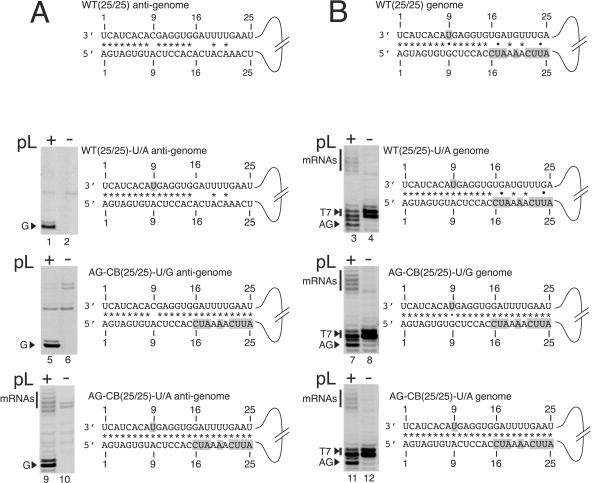FIG. 2.
Schematic representation of the genomic and antigenomic strands of WT(25/25) and its derivatives and analysis of their RNA synthesis activities. (A) Nucleotides hypothesized to be essential for signaling BUNV transcription (shaded) were incorporated into the transcriptionally inactive antigenomic strand of template WT(25/25) to generate templates WT(25/25)-U/A, AG-CB(25/25)-U/G, and AG-CB(25/25)-U/A. The abilities of these antigenomic strands to signal transcription were investigated by primer extension analysis. Plasmids expressing the model BUNV templates WT(25/25)-U/A, AG-CB(25/25)-U/G, and AG-CB(25/25)-U/A were transfected into vTF7-3 infected BHK-21 cells together with BUNV S and L plasmids (+) or BUNV S plasmid alone (−). Negative-sense RNAs generated from these antigenomes were analyzed by primer extension using 33P end-labeled positive-sense oligonucleotide Right-BUN. The products were separated by PAGE and visualized by autoradiography. Genomic replication products are marked with an arrow, and the variably sized negative-sense BUNV transcripts are marked with a vertical bar. (B) The RNA synthesis ability of the genomic strands of templates WT(25/25)-U/A, AG-CB(25/25)-U/G, and AG-CB(25/25)-U/A was investigated by primer extension analysis using negative-sense oligonucleotide Left-BUN. Initial T7 RNA polymerase transcripts and antigenomic replication products are marked with an arrow and the variably sized BUNV mRNAs are marked with a vertical bar. G, genome; AG, antigenome.

